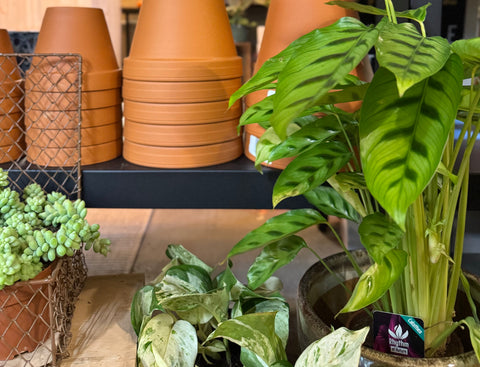Important Information
You're in good hands with Aroma QuartzWe're committed to delivering quality plants with top-notch service. Every plant is backed by our 7-day guarantee, ensuring it arrives in good health.
Our team carefully prepares each plant for its journey, but since plants are living things, they can be sensitive to changes. Minor cosmetic imperfections may occur, but we always strive to photograph and disclose any flaws before shipping. After all, traveling across the country in a box can be a bit of an adjustment!
If you experience any issues within 7 days of receiving your order, reach out to our customer support team via our contact form with your order details and photos of the issue. Please note that once the guarantee period ends, we can’t offer refunds, as we can’t account for care and environmental factors. Also, repotting your plant within the first 7 days voids the guarantee—so let it settle in first!
We've been shipping plants across the country for many years now, and we like to think we've perfected the process!
To keep your plant secure, we carefully wrap the soil with tissue paper and tape if needed, then protect the plant with corrugated cardboard. If extra protection is required, we’ll cushion the leaves with additional tissue paper. The plant is then placed into a sturdy box, and any empty spaces are filled with eco-friendly void fill made from cornstarch—it dissolves in water, so it’s as kind to the planet as it is to your plant! 🌱♻️
Sometimes, we’ll add a note on your packing slip to water your plant upon arrival, so keep an eye out for that. This is because shipping a freshly watered plant can lead to sogginess, and being in darkness during transit can make it unhappy.
If your plant arrives looking a little worse for wear, send us a photo of the plant and packaging (if relevant) right away, and we’ll be happy to advise.
Select Click & Collect at checkout to pick up your order from our Shrewsbury shop. You’ll receive an email when your order is ready—where possible, please collect it the same day, as we have limited space.
If you need to collect later, just let us know in the message box at checkout. Some items, like gift boxes, kits, and pre-orders, may take longer—drop us a note with your preferred collection date, and we’ll confirm if there are any delays. 😊
We don’t offer free returns for change of mind, but if you’re unhappy with your order, please get in touch. If your parcel arrives damaged, send us photos so we can look into it.
Need an exchange? We’re happy to help—just reach out. Additional delivery charges may apply.
For plants, we offer a 7-day return policy, while other items can be returned within 30 days (excluding sale and personalized items, which are non-returnable).
You can return or exchange items for free at our Shrewsbury shop. In-store purchases follow different policies, so check our "In-Store Returns & Exchanges" section for details.

The Houseplant Subscription Box – Grow Your Collection, Effortlessly! 🌿✨
Discover a new hand-selected houseplant each month, carefully chosen to thrive in your home. Our subscription box makes it easy to expand your collection with unique, healthy plants—delivered straight to your door. Plus, you'll get expert care tips to help your new green friend settle in.
Ready to bring more greenery into your space?

